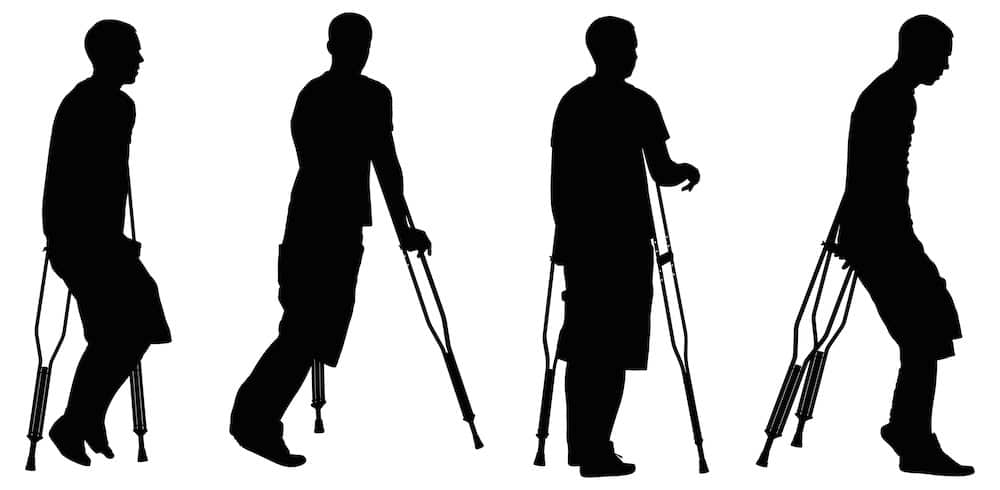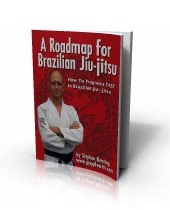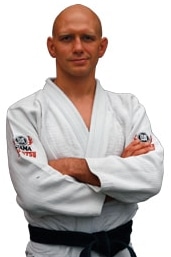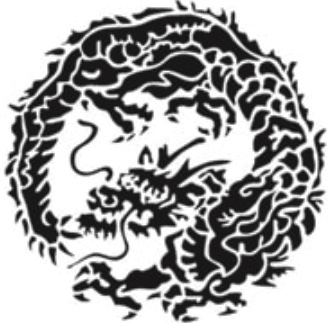
I’m not going to pretend that injuries don’t suck. They do.
There have been many great athletic careers cut short by injury. Many people who would otherwise have been great have had their dreams derailed when a bone went ‘crack’ or a ligament went ‘snap’ and then never quite recovered.
The typical reaction of the BJJ addict when they get injured is, ‘Oh no, now I can’t train.‘ Sometimes this inability to train and improve your skills hurts more than the pain of the injury itself.
I usually have 3 pieces of advice for people people bummed out about not being able to train…
1) Don’t do something foolish and rush back too hard and too fast.
If you re-injure yourself then it’ll take even longer to recover. This is a tortoise-and-the-hare type of situation: make haste by going slowly and carefully.
2) Watch your diet and do anything you can to maintain your fitness.
Your road back will be so much longer if you come back to the dojo out of shape and 25 lbs overweight.
I’ve known many athletic people reacted to an injury by becoming couch potatoes and overeating. Perhaps they were clinically depressed, or maybe it was simply because they weren’t burning off the excess calories through exercise anymore, but the weight they put on made it take much, much longer to get back into fighting shape.
If you can’t run then swim. If you can’t swim then bike. If you can’t weight train your lower body then strengthen your upper body.
Doing something is better than doing nothing.
3) Keep your head in the game.
Watch videos, study instructionals, review apps, and read articles. If you used to train 6 hours a week on the mat then you might be surprised at what studying the art on your computer for just 3 hours a week might accomplish.
Pick an area that you’ve been meaning to work on (sidemount escapes, reverse de la Riva guard sweeps, armbar grip breaks, whatever…), commit what you learn to memory, and then use visualisation to ‘train’ the movements. I promise that this will have carry-over when you get back to physical training!
So we’ve discussed a few strategies for not falling too far behind when you’re injured. Making the best of a bad situation…
But sometimes, just sometimes, there’s also a silver lining in that dark cloud…
Sometimes an injury is also an opportunity to work on a different aspect of your game.
Necessity is the mother of invention. When you can’t do things in the way that you’ve always done them, then sometimes it forces you to find new ways to accomplish what you want to do. Injuries can sometimes open the door to entirely new possibilities.
I was recently corresponding with someone who had had a long string of wrist and finger injuries. His hands were taking a beating every time he trained, and it was getting harder and harder for him to do his favourite techniques.
As we talked it became clear that he had a very grip-dependent game. In fact he specialised in the spider guard which requires a ton of sleeve and lapel gripping. And every time he grabbed cloth it was a death grip; he never released it until he absolutely had to.
My suggestion to him was to train in no gi submission grappling for a while. Without the gi you do a lot less deathgripping, less pulling, and you tend to push more. Also the spider guard is a lot harder to do. Hopefully this will give his fingers time to heal, as well as develop better scrambling abilities and allow him to explore new forms of guard.
All this will pay big dividends when he eventually returns to the gi.
I have experienced these dividends myself. I feel that my open guard took a big leap forward when I had an arm injury early in my BJJ career. Here’s the specific drill I used, and I still use it whenever I’ve got a tweaked wrist, elbow or shoulder.
Another example of adversity leading to technical improvements comes from the originator of the modern half guard, Roberto ‘Gordo’Correira.
When Gordo was 18 years old he suffered an injury that tore the ACL in his left knee. This made conventional guard play impossible, so he started working from the half guard which up to that point had been a purely defensive position in BJJ.
Not only did this allow him to continue training, but it also eventually led to the development of an entirely new area of jiu-jitsu: the offensive half guard.
All of a sudden people started seeing this formerly disadvantageous position – the half guard – as a powerful platform which you can use to sweep, attack and submit their opponents.
Gordo talks about how the knee injury shaped his game from 4:23 to 7:20 in the video below.
And finally, if you’re feeling depressed about not being able to do certain things on the mat while your injury heals, consider the story of Anthony Robles…
Antony is the one-legged wrestler who won the 2011 NCAA individual wrestling championship, competing against able-bodied opponents in the 125-pound weight class.
Just to be clear: it’s a guy with ONE leg competing and winning in arguably the toughest, most demanding sport in the world…
He found a way to turn his disadvantage into advantage. The lack of a leg meant that he had much greater upper body strength than the other people in his division, as well as unique techniques and attacks that his competitors hadn’t seen before.
It’s an incredibly inspiring story. Check out the video below:
P.S. If you’re currently injured why don’t you check out some of the free resources that we have for you at Grapplearts? It’s all good stuff, and if you don’t like what you get you can unsubscribe from our newsletter at any time.


